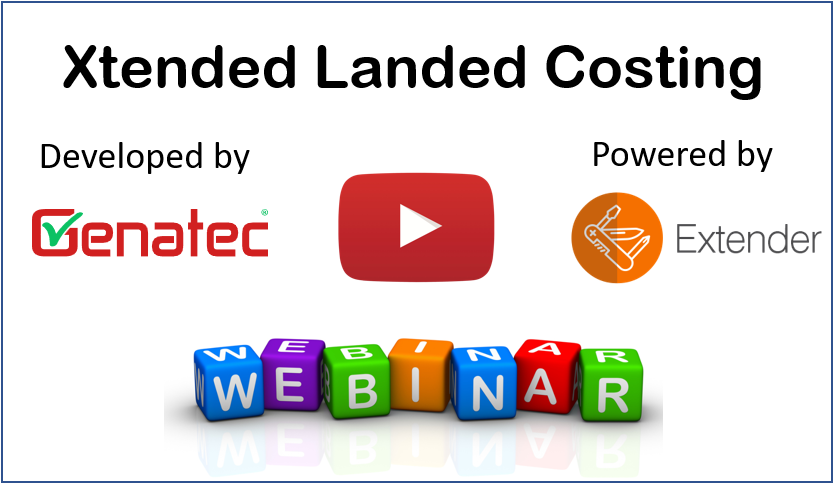Any accountant knows the importance of Cost of Goods Sold (COGS) when it comes to calculating gross profit, but for companies that pay to transport inventory to their warehouse or distribution facility, having a full view of costs takes on another level of complexity.
For some small businesses, managing landed costs might just mean adding inbound courier costs to your COGS, but it’s rarely that simple. The ways we capture, report, and interpret data related to these expenses can dramatically impact our ability to proactively manage profitability.
Welcome to the world of Landed Cost
This is where we enter another realm, where esoteric terms like FOB, demurrage, and drayage can be casually dropped into water cooler conversations.
Here are just some possible Landed Cost inputs, categorized using a formula suggested by Fedex, amongst others:
Landed Cost = Product + Shipping + Customs + Risk + Overhead
Product:
- The original purchase price for the goods.
Shipping:
- Freight, crating & handling fees
- Port and terminal charges
- Demurrage fees (for containers sitting idle at a port or terminal)
- Drayage (transport between port and warehouse)
Customs:
- Cross-border (domestic or international) customs fees, taxes, duties, levies, and tariffs
Risk:
- Insurance for loss or damage of goods in transit
- Compliance and Quality Assurance costs
Overheads:
- Currency conversion fees, payment processing
- Bank charges, transaction & brokerage fees
The Landed Cost Trap
Do we treat the above as an amorphous mess of charges, consigned to the “cost of doing business” bucket, or as a valuable resource that can drive better decision-making at the product level?
We know of one business that imported high volumes of low-value products. They eventually succumbed to import-related costs that had overwhelmed their low margins.
Even with the best of intentions, businesses that aspire to avoid this trap can face many challenges, including:
- Complexity: A failure to account for each of the many and varied charges that contribute to Landed Cost, as illustrated by the list above.
- Timing: Charges can dribble on in over weeks or months, often long after resale pricing has been locked in and inventory has been on-sold, possibly at a loss.
- Allocation: Unravelling shared costs and allocating them to specific items can be very challenging, e.g. different products might be imported in the same shipment, or orders might be split across multiple shipments with different freight costs.
The End Game
A quick Google search will unearth many suggestions on how to get a handle on Landed Cost. These could include add-ons to well-known accounting or ERP solutions, specialist inventory management software, or Landed Cost reports provided by shipping companies.
If these aren't options for you, your in-house spreadsheet guru will find plenty of suggestions. But be wary!
Corporate graveyards are full of companies whose demise might be traced to a complex landed cost spreadsheet.
Whatever approach you take, once you have a good picture of landed costs for all your inventory you’ll be in a better position to focus on managing those costs and increasing margins. That might mean:
- Looking for suppliers closer to home to cut down freight costs and reduce delays.
- Moving your warehousing and distribution hubs closer to the port of entry to reduce drayage.
- Increasing the efficiencies of other logistical operations that fall under your direct control.
If all else fails, the last resort could be exiting product lines that are unlikely to ever be profitable once the true end-to-end costs are added up.
Introducing Extended Landed Costing for Sage 300
Sage 300 sites looking to sidestep the Landed Cost Trap now have a powerful new tool in Xtended Landed Costing, developed by Genatec and powered by Orchid Extender.
It seeks to overcome many of the challenges referred to above. Capability includes:
- Inserting additional costs within the Sage 300 Purchase Order screen.
- Automatically injecting these prorated costs into PO Receipts, thereby overcoming timing issues for cost invoices captured after initial receipt.
- Working with integrated 3rd party modules that generate PO Receipts (e.g. warehouse barcode scanning and WMS modules).
- Managing the full import process, including container management and Bill of Lading costs.
Xtended Landed Costing was introduced and demonstrated in Orchid’s February 2023 webinar. Click the image below to watch the video of that webinar.


